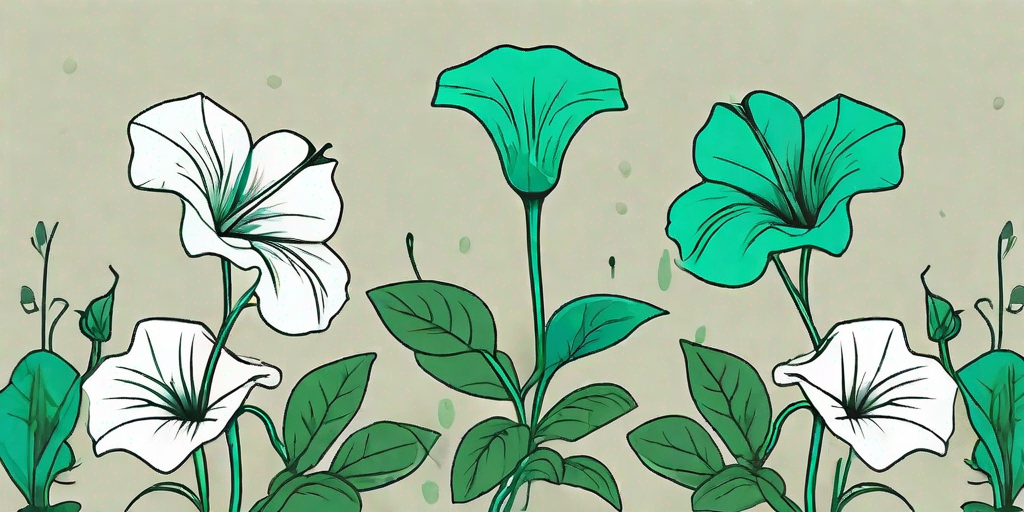
Petunias are the divas of the garden world. They're vibrant, vivacious, and demand attention. But like any diva, they can be a bit high maintenance. If you've noticed your petunias looking a bit under the weather, don't panic. We're here to help you identify and treat common petunia diseases, so you can get your garden back to its show-stopping best.
Identifying Common Petunia Diseases
Before we can treat the problem, we need to know what we're dealing with. Petunias can suffer from a range of diseases, but there are a few common culprits that are likely to be causing your plant pain.
Let's put on our detective hats and get to the bottom of this garden mystery.
Botrytis Blight
Botrytis Blight, also known as Grey Mold, is a fungal disease that can turn your petunias into a mushy, moldy mess. If your petunias have gray or brown spots, or if the flowers are wilting and rotting, Botrytis Blight could be the culprit.
It's a common disease, especially in cool, wet conditions. So if you've had a lot of rain recently, or if your petunias are in a damp, shady spot, keep an eye out for this sneaky fungus.
Verticillium Wilt
Verticillium Wilt is another fungal disease, but this one likes it hot. It's most common in warm, dry conditions, and it can cause your petunias to wilt and die, even if they're getting plenty of water.
If your petunias have yellowing leaves, or if the stems and branches are wilting and dying back, Verticillium Wilt could be to blame.
Treating Common Petunia Diseases
Now that we've identified the problem, it's time to roll up our sleeves and get to work. Treating petunia diseases can be a bit of a challenge, but with a little patience and persistence, you can get your petunias back on track.
Remember, prevention is always better than cure. So let's start by looking at some ways to keep your petunias healthy and happy.
Preventing Disease
Healthy plants are less likely to get sick, so the best way to prevent disease is to keep your petunias in tip-top shape. Here are a few tips:
- Water wisely: Petunias like well-drained soil, so avoid overwatering. Water in the morning, so the leaves have time to dry out during the day.
- Give them space: Petunias need plenty of air circulation to prevent fungal diseases. Make sure they're not too crowded, and prune regularly to keep the plants open and airy.
- Feed them well: Use a balanced, slow-release fertilizer to keep your petunias well-fed and strong.
Treating Disease
If your petunias are already sick, don't despair. There are plenty of treatments available to help them recover. Here are a few options:
- Fungicides: For fungal diseases like Botrytis Blight and Verticillium Wilt, fungicides can be very effective. Look for a product that's specifically designed to treat the disease you're dealing with.
- Pruning: If the disease is localized, you may be able to stop it spreading by pruning the affected areas. Be sure to sterilize your pruning tools before and after use to prevent spreading the disease.
- Replanting: In severe cases, you may need to remove and replace the affected plants. This can be a last resort, but sometimes it's the best way to get rid of a stubborn disease.
Frequently Asked Questions
Why are my petunias wilting?
Wilting can be a sign of several different problems, including overwatering, underwatering, or a disease like Verticillium Wilt. Check the soil moisture levels, and look for other signs of disease like yellowing leaves or rotting flowers.
Why are my petunias turning yellow?
Yellowing leaves can be a sign of nutrient deficiency, overwatering, or a disease like Verticillium Wilt. Check the soil moisture levels, and consider using a balanced, slow-release fertilizer to boost nutrient levels.
Why are my petunias not flowering?
If your petunias aren't flowering, they may not be getting enough light. Petunias need at least six hours of sunlight a day to bloom. They may also need a boost of nutrients, so consider using a balanced, slow-release fertilizer.
Conclusion
So there you have it, folks. A comprehensive guide to identifying and treating common petunia diseases. With a little detective work and some tender loving care, you can keep your petunias looking fabulous all season long.
Remember, the best defense is a good offense. Keep your petunias healthy, and they'll be less likely to get sick in the first place. And if they do get sick, don't panic. With the right treatment, they'll be back to their vibrant, vivacious selves in no time.
Now go forth and garden with confidence. Your petunias are counting on you!















